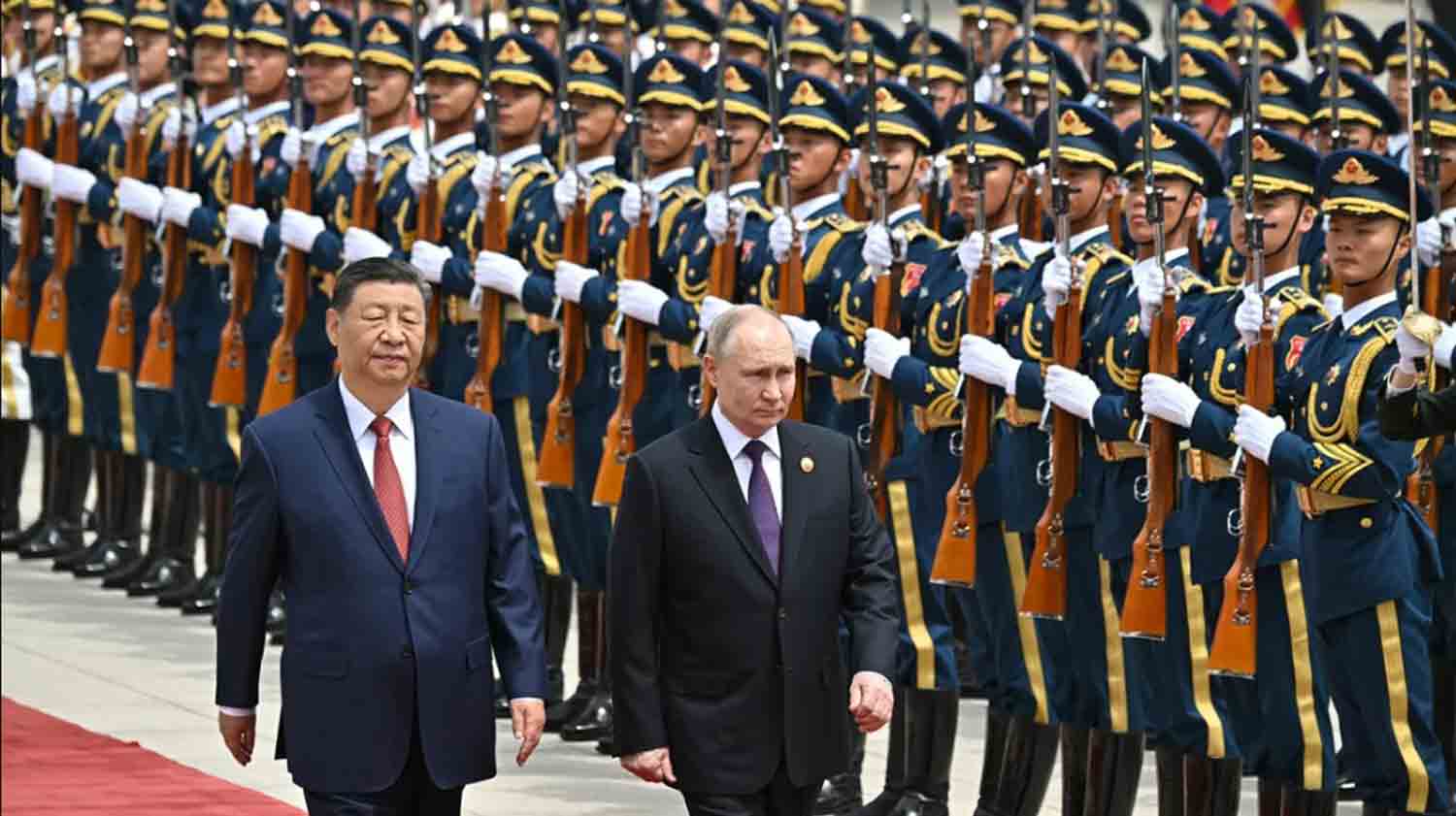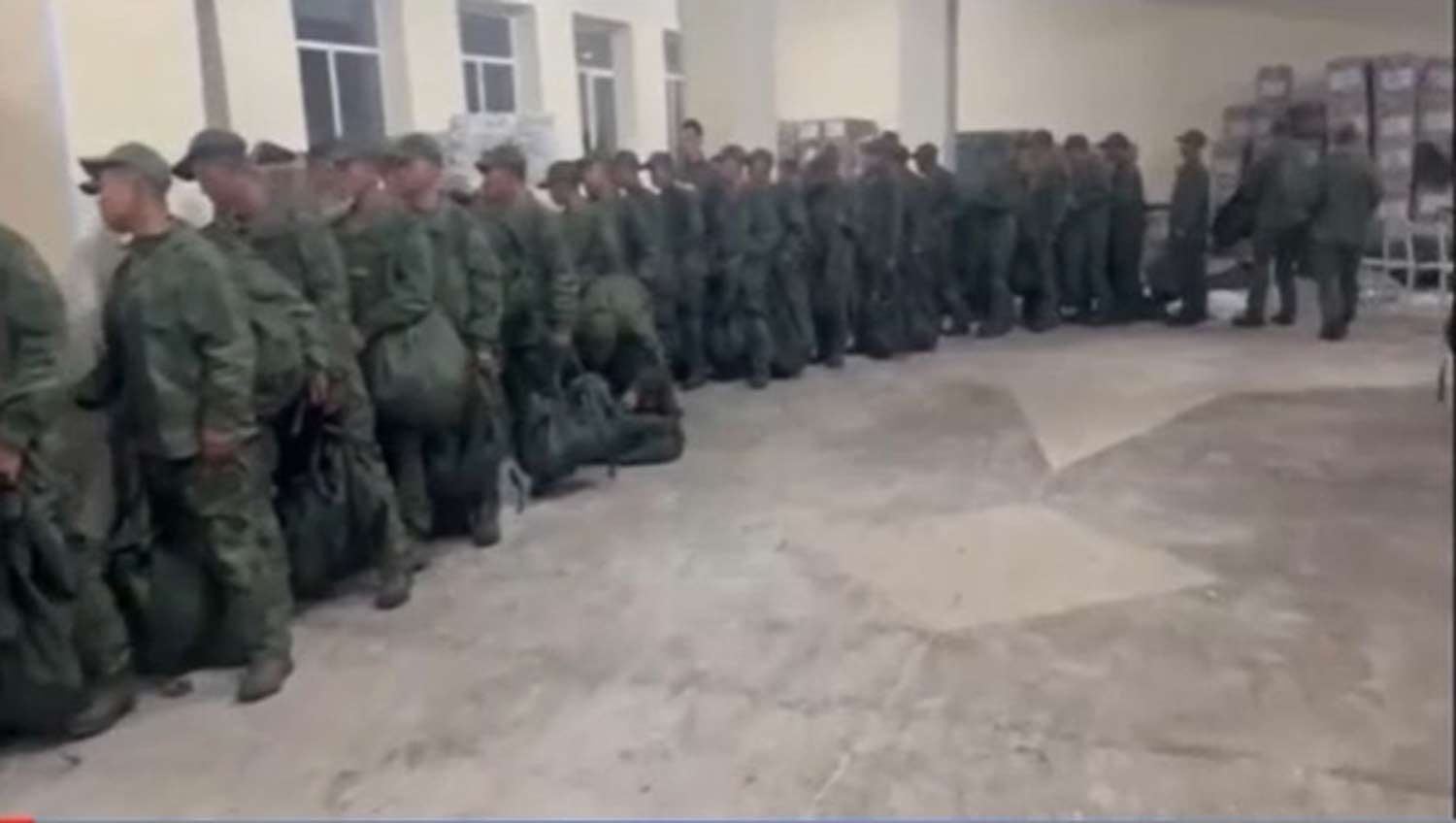The arrival of thousands of North Korean troops in Russia for training this month, as reported by US intelligence, has raised concerns about their potential deployment to support Moscow’s efforts in Ukraine.
This development has alarmed the United States and its allies, highlighting the increasing collaboration among anti-Western nations, which poses a significant and urgent security threat. These nations are transitioning from mere partnerships of convenience to more explicit military alliances.
Additionally, hundreds of Iranian drones have been utilized in Russia’s offensive against Ukraine, and last month, the US indicated that Tehran had supplied short-range ballistic missiles to the conflict zone.
China has also faced accusations of fueling Russia’s military operations by providing substantial quantities of dual-use goods, such as microelectronics and machine tools, which can be repurposed for weapon manufacturing. Recently, the US imposed sanctions on two Chinese companies for delivering complete weapon systems, although all three nations have denied offering such assistance.
In light of this emerging collaboration, a group supported by Congress that assesses US defense strategies labeled Russia, China, Iran, and North Korea as an “axis of growing malign partnerships” this summer.
There is a growing concern that their shared hostility towards the US is increasingly motivating these countries to collaborate, thereby amplifying the threat each poses to Washington and its allies, potentially across multiple regions simultaneously.
US Defense Secretary Lloyd Austin emphasized the seriousness of the situation, stating that if North Korea is indeed acting as a co-belligerent, their involvement in the conflict on behalf of Russia would have significant repercussions not only in Europe but also in the Indo-Pacific region.
Motivated by a strategy of survival
In the decades following the Axis powers of Nazi Germany, Fascist Italy, and Imperial Japan, as well as the intense anti-Western coalition during the Cold War, there is a growing concern about a new and perilous alignment emerging, with Putin’s conflict serving as a significant trigger.
This potential coalition would unite two long-established nuclear-armed nations, alongside a state suspected of having developed numerous illegal nuclear warheads in North Korea, and Iran, which the United States claims could potentially produce such a weapon within weeks.
The military collaboration between North Korea and Russia now connects the ongoing, heated conflict in Europe to a particularly fraught phase of the longstanding tensions on the Korean Peninsula, as North Korean leader Kim Jong Un has intensified his threats against the South, with which his country remains technically at war.
In light of intelligence regarding North Korea’s military activities in Russia, South Korea has indicated it may contemplate supplying arms to Ukraine, where this US ally has not yet directly provided military support.
North Korea, under the leadership of Kim, has little to lose by sending what is believed to be millions of rounds of artillery, short-range ballistic missiles, and even troops to Russia, especially as he has called for an increase in the country’s illicit nuclear weapons program.
In return, the economically strained and internationally isolated regime in Pyongyang is likely receiving food and other essential supplies, along with potential assistance in developing its space capabilities, which could also enhance its missile program that is under sanctions.
The significance of drone warfare in Ukraine has prompted Russia to seek procurement from Iran, further solidifying a security partnership that began in 2015 during the Syrian conflict, where both nations supported Bashar al-Assad’s regime.
For Tehran, which is burdened by severe Western sanctions and is involved in the escalating Middle Eastern conflict with US-backed Israel, supplying weapons to Russia is believed to potentially strengthen its defense industry. Additionally, its relationships with Beijing and Moscow offer diplomatic protection.
Chinese President Xi Jinping, who established a “no limits” partnership with Putin shortly before the invasion, has maintained a stance of neutrality in the conflict and has largely discouraged Chinese companies from providing direct lethal assistance.
However, China has filled significant gaps in Russia’s demand for various goods, including items considered dual-use by the US and others, while also benefiting from discounted energy supplies from Russia. Beijing defends its “normal trade” with Russia and continues to enhance joint military exercises and diplomatic relations with a nation it views as a crucial ally in countering Western influence in international discussions.
While these four nations have distinct reasons for collaborating, particularly in light of Russia’s ongoing conflict, significant barriers remain regarding broader coordination, mutual trust, and a genuine interest in unified efforts—at least for the time being, according to analysts.
“This is a collection of bilateral relationships shaped by each nation’s survival strategies, influenced by the current geopolitical landscape and the pressing crises they face,” remarked Alex Gabuev, director of the Carnegie Russia Eurasia Center in Berlin.
“These are authoritarian regimes that collectively view the United States as a common threat. This perception serves as a unifying factor; however, the prospect of meaningful coordination among all four is still quite distant,” he added.
This raises an important question about whether these current alliances can persist beyond the Ukraine conflict and potentially develop into a more cohesive partnership among the four countries.
The Influence of China
Analysts indicate that China’s role is crucial in determining the trajectory of future alignments. As the most influential player in the coalition, China serves as the primary trade partner for Russia, North Korea, and Iran, while being perceived by the United States as its foremost rival.
With the growing rift between Beijing and Washington, China has intensified its efforts to contest U.S. global dominance and to reshape the international landscape in a manner that benefits itself and other authoritarian regimes.
This week, during a summit of the BRICS nations in Kazan, Russia, Xi Jinping and Vladimir Putin publicly reaffirmed their dedication to creating a “fairer” global order, highlighting their collaborative efforts to expand the group’s membership.
In this diplomatic initiative, they have included Iran and have largely aligned with Tehran in the ongoing Middle Eastern conflicts, where Iranian proxies are engaged against Israel. Since 2019, China, Russia, and Iran have conducted four joint naval exercises, with China being the largest purchaser of Iranian energy.
However, according to Jean-Loup Samaan, a senior research fellow at the National University of Singapore’s Middle East Institute, Iran is no longer the primary focus of China’s Middle Eastern strategy, as Beijing seeks to strengthen ties with more affluent Gulf nations.
Beijing meticulously oversees its relationship with North Korea, which relies heavily on China for both economic and diplomatic support. Chinese officials are generally cautious about the growing alignment between Kim Jong-un and Vladimir Putin, fearing that a stronger North Korea could create instability and attract increased U.S. attention to the region.
During a regular press briefing on Thursday, when questioned about the deployment of North Korean troops into Russia, China’s foreign ministry stated that it “does not have information on that.”
While China engages in assertive actions in the South China Sea and towards Taiwan, the democratic island it claims, it may be reluctant to fully embrace these partnerships, as it seeks to maintain its image as a responsible global leader.
Tong Zhao, a senior fellow at the Carnegie Endowment for International Peace, noted that “the grouping of Russia, North Korea, and Iran is one that China is least inclined to openly associate with.” He emphasized that China is eager to communicate that it does not form a trilateral alliance with Russia and North Korea, and it has a broader range of options, preferring to collaborate with a larger number of countries to counterbalance the West.
A significant concern
From a Western perspective, China’s unwillingness to sever economic ties with North Korea, which defies UN sanctions, and with Russia, which has threatened nuclear action in Ukraine, is frequently interpreted as tacit support for these regimes.
In July, the Commission on the National Defense Strategy, an independent body established by Congress to assess US defense policies, noted that the partnership between China and Russia has “deepened and broadened,” now encompassing military and economic collaborations with Iran and North Korea.
“This emerging coalition of nations that oppose US interests poses a significant concern, if not a strong possibility, that conflicts in any region could escalate into a multi-theater or global war,” the report stated.
China has consistently maintained that its relationship with Russia is characterized by “non-alliance, non-confrontation, and not targeting any third party.”
In recent years, NATO has also sought to strengthen ties with US allies and partners in the Asia-Pacific region, highlighted by last week’s defense ministers’ meeting, which included representatives from Australia, Japan, New Zealand, and South Korea for the first time.
In the near term, Russia’s arms partnerships may also enable Iran and North Korea to acquire and develop sensitive weapons technologies from Moscow, potentially facilitating their distribution worldwide, as noted by Carnegie’s Zhao.
The current geopolitical landscape increases the likelihood that future conflicts, particularly those involving China rather than Russia, may witness collaboration among the four nations, according to some analysts.
For instance, in the event of a conflict in the South China Sea or regarding Taiwan, there is ongoing discussion about whether Beijing might prefer North Korea or Russia to act as a diversion in Northeast Asia.
However, several experts caution against viewing this potential “axis” as an inevitable outcome, as these relationships tend to be opportunistic rather than founded on strong ideological connections or mutual trust.
Moreover, there is a possibility that China could be encouraged to adopt “more moderate behavior,” which might mitigate this potential scenario, as noted by Sydney Seiler, a senior adviser at the Center for Strategic and International Studies in Washington.
Nevertheless, given the current situation, he emphasized that “the risk is sufficiently present” that the United States could encounter a future conflict involving multiple countries in this context.
Discover more from Defence Talks | Defense News Hub, Military Updates, Security Insights
Subscribe to get the latest posts sent to your email.





